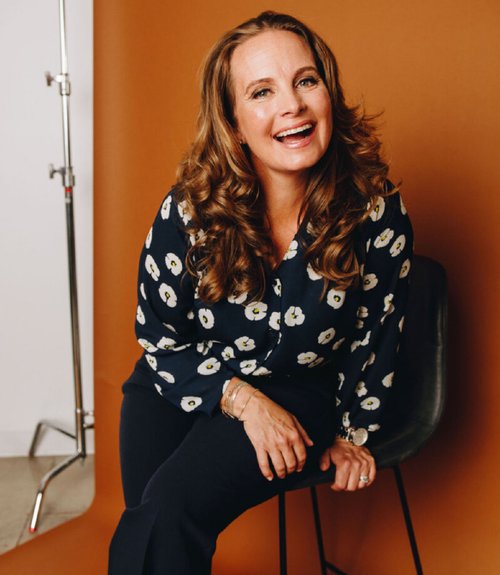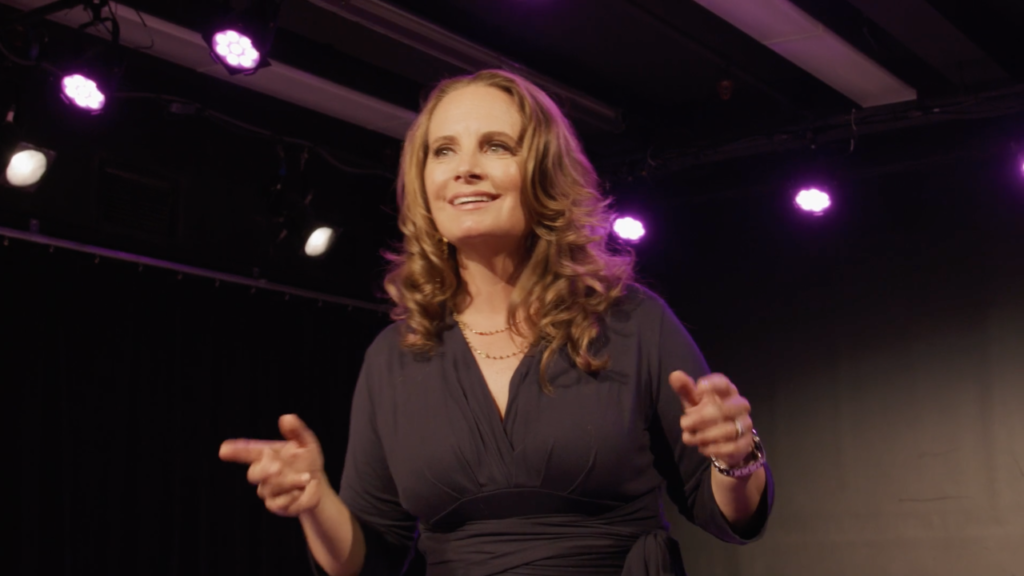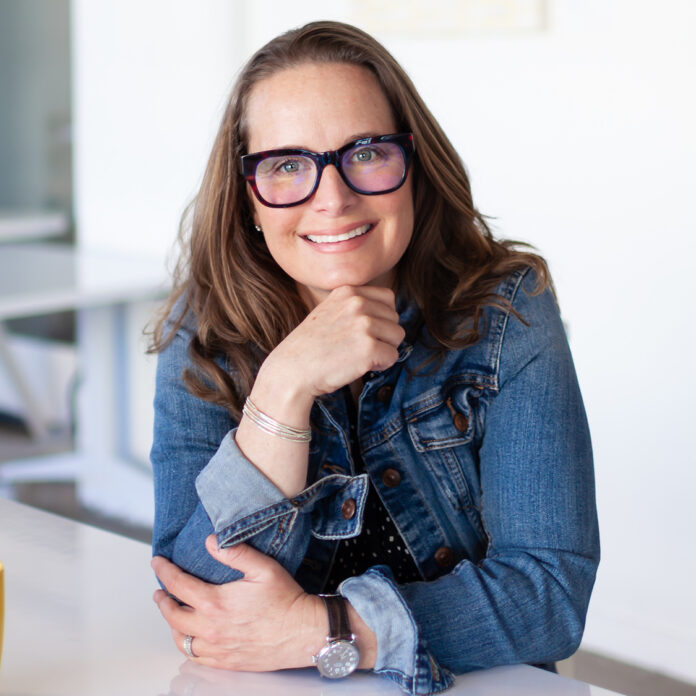( ENSPIRE Interviews ) With Emphasis on DEI Practices Rising, Sarah Bettman Teaches Us About it and Her Experiences
ENSPIRE Contributor: Megan Sydow
Diversity, equity, and inclusion—also known as DEI—practices in the workplace are something that has grown in importance in recent years. Maintaining a fair, equitable work environment where everyone is properly represented and treated has been a battle for quite some years, and the mistreatment has gone on long enough for many people. Some of these people have specialized in DEI practices to create a better environment for those who have been historically mistreated. One of those many people is Sarah Bettman.
Sarah Bettman’s experience with DEI extends over a decade. She started in DEI during her time at Kaiser Permanente, then proceeded to work with companies such as Lenovo and Procter & Gamble to develop more inclusive cultures; this happened while she was a Principal Consultant with Linkage, Inc. She expanded the work to advance women and helped build the DEI strategy for Fortune 500 Constellation Brands, along with her own company Bettman Consulting Group which provides advisory services, workshops, and keynotes about inclusivity and diversity. ENSPIRE interviewed her to get an insight into her company, why DEI is important, and how she, as a white woman, is an effective advocate for DEI practices.

Can you describe what DEI is?
Quite literally, it’s having diversity in your organization. Technically, in the US this is referencing demographic diversity as defined by the EEOC, but even that is limited. The EEOC still defines gender as binary. That said, diversity can mean all sorts of differences from visible differences, [such as] gender, race, etc., to invisible differences, [such as] ability, neurodiversity [and] even ways of thinking. Diversity is making sure there is a complex mix of people in the room who can help ensure a robust discussion that can lead to better outcomes.
I’m going to jump to Inclusion next, which is people’s experience in an organization. There are so many different ways people describe inclusion. Mine is to say that EVERYONE is stoked to be there, they can be themselves and grow, and can contribute their perspectives and ideas for the betterment of the organization. Inclusion can be measured in a number of ways, from engagement scores and turnover, which are lag measures or by lead measures such as engagement in meetings and volunteering for projects. I should note, this is different from being “included.” That’s not what inclusion is. In my mind, it’s a sense of being a part of something, being considered, and being able to contribute in a meaningful way.
Finally, equity. I saved this for last, because equity for many of the companies I work for is aspirational. Equity to me is having the right support for people to be fully engaged. It works even if what they need is different than what others need. For example, I used to work with a company that provided water-based experiences and transportation via boats. Leveraging their industry as a metaphor I explained it this way…equality is making sure everyone has the same resources, so in their case providing everyone the same sized life jacket – say a medium life jacket. Equity on the other hand asks the question, “what is the objective of the life jacket?” Well, it’s to save lives, so you can see that everyone having a medium life jacket doesn’t achieve the objective. So in order to achieve the objective, everyone needs the sized lifejacket that will accomplish the objective of saving lives.
We see these issues come up when we talk about leaves. Whether it’s maternity leave, paternity leave, family leave, etc. Companies who are striving for equity have implemented “life” programs so that you can take care of your life without worrying about your job. This means a person may be able to take time off to take care of an elderly family member, including extended family – they no longer have to define the family structure of mom, dad, child, etc. Some companies even acknowledge that pets are part of the family and provide pet insurance or time away for dealing with ailing pets. I will admit, these programs aren’t perfect, but they are certainly looking at what support will allow employees to have the best experience, recognizing that one size doesn’t fit all. That is getting towards equity.

How effective are the services your company offers that pertain to DEI?
I think they are very effective. We use a high touch, methodical approach where we frequently say that it’s important to go slow to go fast. This means we focus on experiences that build awareness and understanding, which leads to organic shifts in mindset and behaviors. It’s our belief that once our clients understand what DEI means to them and the implications for the different people in their organization, they will create meaningful action and change.
It was this approach that I used to build the DEI strategy for Constellation Brands, a Fortune 500 alcohol/beverage company, and it is the foundation of our approach – define the “why bother,” shift the mindset before executing on a strategy, engage and listen to employees and the community, and then build the strategy around the energy taking place in the organization. By the time we are sunsetting our relationships with our clients, the leaders have grown and understand what it means to be inclusive, the employees are able to raise their voices and concerns on behalf of the different groups in the organization, and planning for DEI is integrated in the strategic planning for the org. By then, they are hiring someone to lead their culture/DEI initiative or are ready to move on to a consultant that can help with integrating specific systems and processes.
We’ve built some incredible relationships with our clients and have seen great changes. It’s not always a grandiose or dramatic change. It’s the subtle shifts, the conversations, and the listening that tells me our clients are doing the real work that leads to lasting results. I’m proud to see what Constellation is doing now and know that I was there at the very beginning. I’m proud of our client who walked in their local PRIDE parade with rainbow shirts with logos on them – that wouldn’t have happened a year ago, but the company inclusion council made the case, and the leadership supported them. Funny side note, a couple of their key clients were at the parade and were excited to see the company there. This year’s goal – double their presence. I’m proud of the client who has taken over the leadership of their inclusion council, executive scorecards, and hired a team to lead their DEI strategy based on the simple steps we took to get them started. We have a lot of great stories to tell and that tells me that what we’ve got going on is working.
Why are DEI practices so important to implement and enforce?
At the risk of seeming like I’m not answering your question, I believe it’s most important to define the “why bother” implementing DEI practices first. Then begin to shift leadership mindsets BEFORE implementing and enforcing DEI practices. Otherwise, an organization is at risk of implementing practices with the mindsets (biases, etc.) that caused the problem in the first place.
Once an organization is clear about why they want to be more inclusive (as rooted in their culture), then the DEI practices are important to help keep inclusion top-of-mind, break old behaviors, and help create meaningful and measurable change. Rarely do things change in an organization if it’s not measured.

In an area that affects mostly women of color, how can you, as a white woman, being an advocate for DEI practices be an effective thing?
Great question. There are three reasons why I believe being a white woman can be effective.
First, the foundation of my expertise is in creating high performing teams and cultures, with an emphasis on leadership development. I have 20 years of experience doing this work globally. I also have over 15 years’ experience in the DEI space, starting with learning about health disparities in a large health system. I quickly translated that work to add a lens to the organizational development work I was already doing. I have a solid foundation of working in complex and diverse spaces.
Second, I think it’s important to be clear about the spaces within which I work. I go into organizations that are just starting on their journey towards creating more inclusion. These organizations tend to be in predominantly white and male industries with white and male leadership teams. I go into spaces where the emotional labor of an underrepresented person could be high. As my friend and colleague, who is a Black woman, said, “there is no way in hell I could do what you’re doing and I’m glad you’re doing it.” I am able to navigate difficult topics and facilitate emotional growth with these groups who honestly want to do well, but don’t know how. I can weather the missteps with them as they figure out their way forward. As these leadership teams become more open to conversations that previously felt hard and are better able to work well with different groups, we then bring in diverse voices to support their continued learning. As another friend once said, “Sarah, you’re the warm-up band that gets people started on their journeys.”
Third, I’ve had to learn about race, gender identity, ability…even about the experiences of women in male dominated spaces. When I was a firefighter and frequently the only woman in the firehouse, I remember proudly saying, “I’m not here to make this a better place for women.” Though I generally had very positive experiences, I also understand I was assimilating and trying to fit in…much like executive women who make it to the top. It can feel lonely, and the role feels tenuous, so we can sometimes make it harder for other women to ascend.
Having been in a position where I had to learn about the experiences of others, I understand how to learn about differences. I believe it is the foundation of being inclusive- being able to learn about difference. I can say, “I remember when I learned that, and this is how it’s changed me….” and I can apply what I’ve learned when I am challenged with learning something new about a group. I do this work as a fellow traveler and share my stories to help others along with me.

What are the benefits of a more inclusive workspace?
An inclusive workplace is a high-performing workplace…the fundamentals of creating high performing cultures has not changed. What’s shifted is recognizing that an inclusive workplace is a place where ALL can thrive and where demographic differences or other differences are not barriers to a person’s success but are attractive qualities to be leveraged. In the past, the idea that we should separate life and work and not bring personal issues to work allowed us not to consider differences at the level we need to be looking at it now. Bottom line – stoked employees are engaged employees, engaged employees are more likely to be engaged because they are an inclusive environment. Therefore, benefits include better results, better innovation and responsiveness to industry changes and reduced costs from turnover, workers comp claims, and quality issues.
How can employers create a more inclusive workspace? How can we promote inclusivity in our everyday lives?
It starts with having the awareness and ability to see what the issues are for different groups. We can’t fix what we can’t see. Once we start to see what issues, say, women or People of Color or LGBTQ people are having, we are then able to listen better about what their concerns are and are able to begin to address issues together. For our clients, this starts with education for the leadership team and employees and creating an inclusion council for those two groups to meet and talk about the issues in the organization.
In our day-to-day lives, I think we need to get away from this idea that being woke is the objective. I find that stunts our learning. The longer I’m in this space, the more I’ve become aware of my conscious incompetence. This keeps me curious, humble, and open to feedback, so that I can continuously do better. In order to do better, we need to keep learning, seeking perspectives of people who are different from us and then thinking through what the implications are for those that are different, especially when those people are not part of the majority group.
The quote by Maya Angelou really resonates with me: “Do the best you can until you know better. Then when you know better, do better.”
Related articles: The Significance of DEI: A Discussion with Stacey Gordon, DEI Marketing Firm CEO Sharon Smith-Akinsanya Is Dedicated To Providing Equal Career Opportunities For People Of Color







